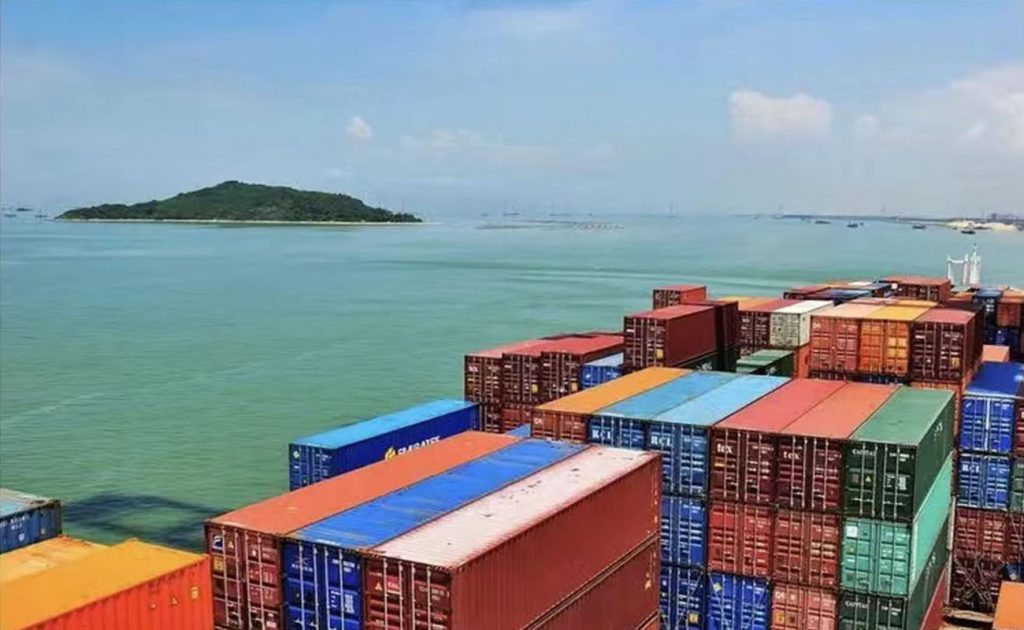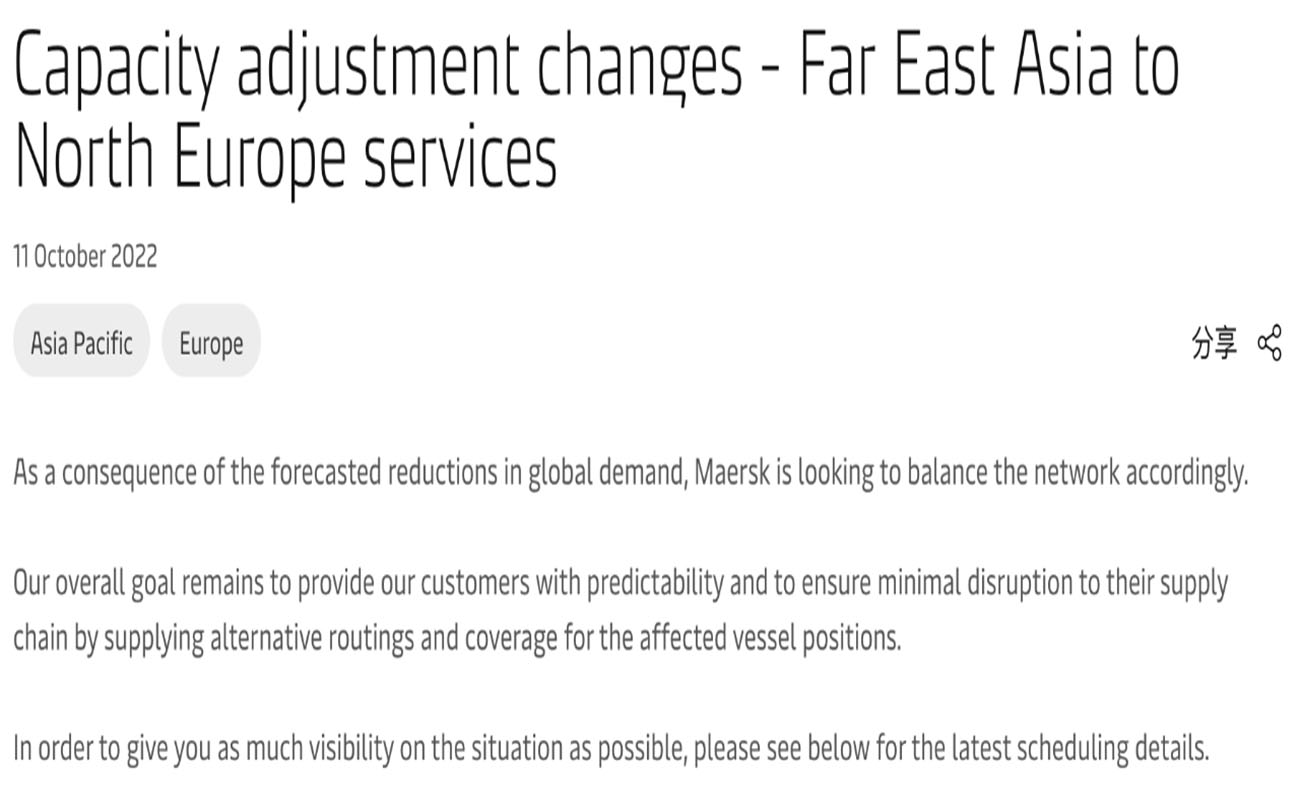2M alliance announced: reduce the capacity of Asia-Europe routes!
Maersk expects global transport demand to continue to decline.
The downward trend in global transportation demand continues, forcing liner companies including Maersk and Mediterranean Shipping (MSC) to continue to cut capacity.
On October 11, Maersk announced that it is expected that global demand will continue to decrease. In view of this, the company is making corresponding adjustments to rebalance global capacity. The latest adjustment is to reduce the capacity of the Asia-Europe route.

Maersk said that under the measures to reduce the capacity of the Asia-Europe route, the first ship to be affected is the “MSC Hamburg” operating on the AE1/Shogun route of the 2M alliance.
The ship, with a capacity of 16,652 TEU, was originally scheduled to set sail from Ningbo on October 26, with ports of call including Ningbo, Xiamen and Yantian in China, Tanjung Pelepas in Malaysia, and Zeebrugge, Rotterdam and Bremen in Europe.
Maersk said its overall aim remains to provide customers with predictability and to minimise the impact on customers’ supply chains by providing alternative routes for affected vessels.

According to shipping industry data analytics firm eeSea, the AE1/Shogun route deployed a total of 11 vessels with an average carrying capacity of 15,414TEU during the 77-day round-trip itinerary.
Regarding the above-mentioned business adjustment, some industry analysts believe that due to the impact of the sharp drop in booking volume, the 2M Alliance has no choice but to adjust the capacity to avoid further plummeting of spot freight rates and short-term contract freight rates. Profits are negatively affected.

Recently, the container shipping market has continued to be weak, especially in the US and Western markets, where both volume and price have fallen. Liner companies have made corresponding business adjustments before.
Before the 2M alliance cut capacity on the Asia-Europe route, the alliance had already suspended its Sequoia/TP3 route to the west of the United States at the end of September this year, due to the “reduced transportation demand in the west-US market in the past few weeks”. After the suspension of the Sequoia/TP3 route, the original cargo on this route can be transported through the Jaguar/TP2 route of the 2M alliance.
Not long ago, Matson Steamship also suspended its seasonal route China-California Express (CCX) due to the slump in spot freight rates in the market.
There is also news that CMA CGM will also suspend its “Golden Gate Bridge” service in the western US market. The route calls at Shanghai, Yantian, Oakland, Seattle, Kaohsiung and other ports, and 7 ships of 5000TEU to 11000TEU are put into operation.
Asia-based shipping data provider Linerlytica said the suspension was ineffective in stemming the decline in freight rates and that what was most needed was a “permanent capacity withdrawal”.
Regarding the recent market volatility, a person from a shipping company operating Asia-Europe routes said: “This is the worst situation I have seen since the beginning of the epidemic, and we expect demand to drop by 25%.”
It added that bookings to the UK in the coming weeks were particularly low. “The market is always weak after China’s Golden Week holiday, but this year could be the worst.”
In addition, as the European economy declines, inflation intensifies, and strikes in European countries including the United Kingdom continue, some analysts believe that port congestion in the United Kingdom and even Europe will rise to an “unprecedented level”, further increasing supply chain risks.
Maersk also said in September that “increasingly pessimistic” economic and trade prospects are creating strong headwinds for the container shipping market as the U.S. and European economies slow sharply.


